Pressure in the heating system: what should it be and how to increase it if it drops
Following the failure of the pressure in the heating system, a problem comes - the quality of heating the premises in the house decreases. You can, of course, adjust the heating operation once and for a long time, but this period will not be infinitely long. Once the normal pressure in the heating system changes, and significantly.
We will tell you how to keep under control the physical parameters of the coolant. Here you will learn how to ensure a stable speed of movement of heated water through the pipeline to the devices. Understand how to get and maintain a comfortable indoor temperature.
The article proposed for consideration details the reasons for the pressure drop in closed and open systems. Effective balancing methods are given. The information presented for review is supplemented by diagrams, step-by-step instructions, photos and video guides.
The content of the article:
Types of pressure in heating systems
Depending on the current principle of movement of the coolant in the heat pipe of the circuit, in heating systems, the main role is played by static or dynamic pressure.
Static pressure, also called gravitational, develops due to the attractive force of our planet. The higher the water rises along the circuit, the stronger its weight presses on the pipe walls.
When the coolant rises to a height of 10 meters, the static pressure will be 1 bar (0.981 atmosphere). An open heating system is designed for static pressure, its largest value is about 1.52 bar (1.5 atmospheres).
Dynamic pressure in the heating circuit develops artificially - using an electric pump. As a rule, closed heating systems are designed for dynamic pressure, the circuit of which is formed by pipes of much smaller diameter than in open heating systems.
The normal value of the dynamic pressure in a closed heating system is 2.4 bar or 2.36 atmospheres.
Consequences of instability in circuits
Insufficient or higher pressure in the thermal circuit is equally bad. In the first case, part of the radiators will not effectively heat the premises, in the second, the integrity of the heating system will be violated, its individual elements will fail.
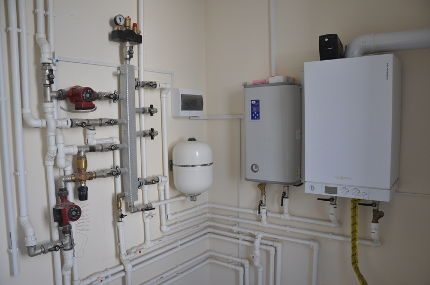
An increase in dynamic pressure in the heating pipe occurs if:
- the coolant is too overheated;
- insufficient pipe cross-section;
- the boiler and pipeline are overgrown with scale;
- air congestion in the system;
- too powerful booster pump installed;
- there is water recharge.
Also increased pressure in closed loop causes incorrect balancing by the taps (the system is regulated) or a malfunction of individual valve regulators.
For monitoring the operating parameters in closed heating circuits and for their automatic adjustment, a safety group is established:
The pressure in the heating pipe drops for the following reasons:
- coolant leak;
- pump malfunction;
- breakthrough of the expansomat membrane, cracks in the walls of a conventional expansion tank;
- malfunctions of the security unit;
- leakage of water from the heating system into the feed circuit.
The dynamic pressure will be increased if the cavities of the pipes and radiators are clogged, if the filter traps are dirty. In such situations, the pump operates under increased load, and the efficiency of the heating circuit decreases. The standard result of exceeding the pressure values is leakage in the joints and even pipe rupture.
The pressure parameters will be lower than necessary for normal functionality if a pump of insufficient power is mounted in the line. He will not be able to move the coolant at the required speed, which means that a somewhat cooled working medium will be delivered to the device.
The second striking example of a pressure drop is the duct is blocked by a tap. A sign of these problems is the loss of pressure in a separate segment of the pipeline, located after an obstacle to the coolant.
Since all thermal circuits have devices that protect against excessive pressure (at least safety valve), the problem of low pressure happens much more often. Consider the causes of the fall and ways to increase the pressure, and therefore improve the circulation of water in heating systems of open and closed type.
Pressure in an open heating system
Unlike a closed heat circuit, a properly built open heating system does not require balancing with years of use - it is self-regulating. The operation of the boiler and the static pressure ensure a constant circulation of water in the system.
The density of the heated water following the supply riser is lower than the density of the cooled coolant. Hot water tends to occupy the highest point of the circuit, and chilled water - to appear at its very bottom.

The pressure developed by the column of water in the riser contributes to the circulation of the coolant and compensates for the resistance present in the pipeline. It causes friction of water on the inner surface of the pipes, as well as local resistance (bends and branches of the pipeline, boiler, fittings).
By the way, pipes of increased diameter are used for assembly open heating system precisely in order to reduce friction.
To understand how to increase the pressure in an open heating system, you must first understand the principle of achieving the circulation pressure in the thermal circuit.
His formula:
Rc = h • (pabout-Rg),
Where:
- Rc - circulation pressure;
- h is the vertical distance between the centers of the boiler and the lower heating radiator;
- Rg - density of the heated coolant;
- Rabout - density of the cooled coolant.
Static pressure will be higher if the distance between the central axes of the boiler and the battery closest to it is as large as possible. Accordingly, the intensity of the coolant circulation will be higher.
To achieve the maximum possible pressure in the heating circuit, it is necessary to lower the boiler as low as possible - into the basement.
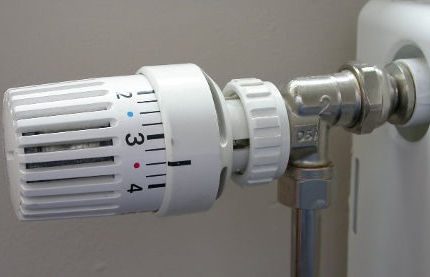
The second reason for the pressure drop in an open heating system is associated with its self-regulation. With a change in the temperature of heating the coolant, its flow rate changes. By increasing the heating of water for the thermal circuit on cold winter days, the hosts sharply reduce its density.
However, when passing through heating radiators, water gives off heat to the room atmosphere, while its density increases. And according to the formula presented above, the high density difference between hot and chilled water contributes to an increase in the circulation pressure.
The more the coolant warms up and the colder it is in the rooms of the house, the higher the pressure in the system will be. However, after the atmosphere of the premises warms up and the heat transfer of the radiators decreases, the pressure in the open system will drop - the difference between the temperature of the supply water and the return will decrease.
Balancing a dual-circuit open heating system
Gravity heating systems are performed with one or more circuits. At the same time, the length of each looped pipeline horizontally should not exceed 30 m.
But to achieve optimum pressure and pressure in the open natural motion system it is better to carry out the coolant pipelines even shorter - less than 25 m. Then it will be easier for water to deal with hydraulic resistance. In a circuit with several rings, in addition to limiting the length, the condition for heating radiators should be observed - the number of sections in all rings should be approximately equal.
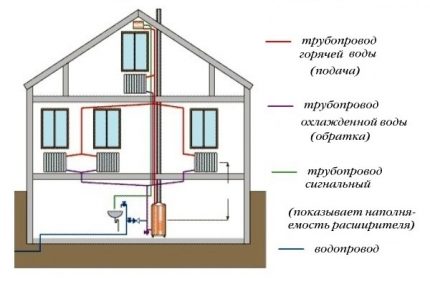
The balancing of the horizontal rings included in the vertical circuit is required at the design stage of the heating system. If the hydraulic resistance of any ring is higher than that of the others, the static pressure in it will be insufficient and the pressure will practically cease.
To maintain the required pressure in the dual-circuit heating system, it is necessary to reduce the cross-section of the pipes on the approach to the radiators. You can also install in front of the radiators valves that perform thermoregulation (manual or automatic).
You can balance an open-loop dual-circuit system:
- Manually. We start the heating system, then we measure the temperature of the atmosphere of each heated room. Where it is higher - we fasten the valve, where below - we unwind. To adjust the heat balance, you will have to perform temperature measurements and valve adjustments several times;
- Using thermostatic valves. Balancing occurs almost independently, you only need to set the desired temperature in each room on the valve handles. Each such device will control the flow of coolant to the radiator itself, increasing or decreasing the flow of coolant.
It is especially important that the total hydraulic resistance of the heating system (all rings in the circuit) does not exceed the value of the circulation pressure. Otherwise, heating of the coolant and attempts to balance the system will not improve circulation.
Circulation pump for an open heating system
It happens that measures to balance the heating circuit of the gravitational system do not give an effect.Not all causes of low pressure are solved by tuning - the choice of the wrong pipe diameter cannot be fixed without a complete reconstruction of the circuit.
Then, in order to increase pressure and improve the movement of water without significant alteration of heating, into the system mounted circulation pump or booster pump device. The only thing that will require its installation is the transfer of the expansion tank or its replacement with a membrane expansion tank (closed tank).
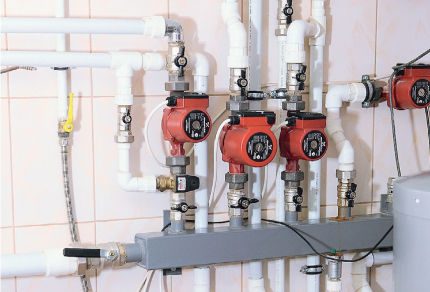
The power consumption of the circulation pumps does not exceed 100 watts. Therefore, it is not necessary to fear that he will push the coolant out of the circuit.
The volume of water in the heating system is more or less constant, subject to monitoring the filling of the open circuit. Therefore, no matter how much water the circulation pump pushes along the circuit in front of itself, the same amount will enter it from the return pipe.
Bringing the pressure in the thermal system to the required level, the pump will allow it to be extended, to reduce the diameter of the pipeline and to achieve balance of the circuit with high hydraulic resistance.
Pressure in a closed heating system
The installation of a modern boiler, especially a double-circuit one, is called by sellers an ideal solution for home heating. With high-quality installation of a new boiler closed enforcement system it has been serving properly for several years, but once the pressure in it sharply or gradually decreases. How to find the cause of low dynamic pressure?
A closed heating system needs close attention. A drop or increase in pressure is equally dangerous for her. Left without heating in winter is the homeowner's worst nightmare.
First of all, it is checked both upward and circulation pumpavailable in the thermal circuit. This device wears out faster than a boiler, explant or pipe, so its condition is determined first.It is important to make sure that the “silent” pump receives power and only after that take measures to replace the device.
In general, it is more rational to integrate two pumps into the heating circuit in advance - one in the main pipe, the second in the bypass. A closed heating system cannot operate at low dynamic pressure. Therefore, a spare pump, turned on in time, will protect the house and the pipeline from freezing.
If the pump is working, the source of pressure loss is in the boiler or in the piping system. The boiler is checked last, first - the heating circuit.
Fluid leak detection steps
It is possible to independently detect leaks in the heating system if the pipes are installed openly, there is access to the taps and to all the connecting elements. It is also required to remove the decorative casing of heating radiators.
You need to go through the entire thermal circuit with a flashlight, closely studying each connection, each element of the system (boiler piping too). We are looking for puddles of water, wet spots on the floor, traces of dried water, rusty leaks on pipes, batteries and valves.
We take a small mirror, highlight it with a flashlight and examine the back side of each section of the heating radiator. If the batteries are prefabricated, made of cast iron or aluminum, the connections between the sections should be examined. Corrosion, rust streaks - a sign of leakage, even if the floor is dry under the radiator.
There are situations when the pressure in the circuit drops slowly, day by day. Moreover, there are absolutely no visible traces of leakage on the elements of the heating system or on the floor. Rather, there are many leaks, but they cannot be detected.
Leaking water evaporates on the pipe, radiator or on the floor surface, i.e. noticeable puddles are not formed. It is necessary to identify the places of possible flow of the coolant, put sheets of soft paper under them - napkins or toilet paper are suitable. After a few hours, check the paper for moisture. If wet, then there is a leak here.
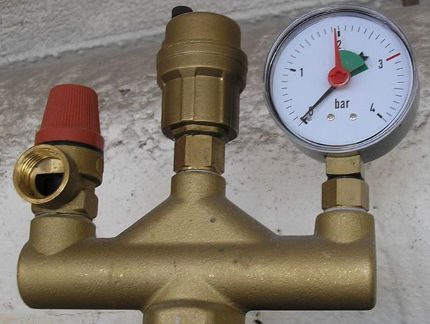
In a house equipped with a partially hidden heating system, it is impossible to find leaks on its own. It remains only to call the heat technicians who will search for leaks of the thermal circuit using special equipment.
The heat engineering leak detection in the heating system is carried out in a certain sequence. First, the coolant is drained from the circuit.
Then, the compressor is connected to the entire heating pipeline or to its individual segments equipped with shut-off valves through a threaded connection. In the extreme case, you can connect a car pump to the pipeline.
After a few minutes from the beginning of the injection of air into the heat circuit, in the places of leaks a distinctive sound of the outgoing air is heard. Each section of the heating system embedded in a wall or floor with a leak detected by sound must be opened from the cement screed.
Further, the leak is eliminated by replacing the pipe segment, hauling the connection with the winder of the tow or fum tape, removing and installing new stop valves.
Differential pressure in the boiler
We note immediately that only the heating engineer of the service department can determine the exact breakdown of the boiler equipment. Those. the homeowner will not be able to independently find out and, moreover, eliminate a serious breakdown that caused a drop in pressure in the heating boiler.
Let us consider the possible causes of the “creeping” pressure change on the boiler pressure gauge that occurs when the boiler is in good working order.
Crack in heat exchanger. Over the years, the walls of the heat exchanger in the boiler may receive microcracks.The reasons for their formation are wear of the unit, weakening of the strength during flushing, pressure testing (water hammer) or factory defects. The coolant flows through them and the boiler needs to be fed with water every 3-5 days.
Visually, no leakage can be detected - water flows weakly, with the burner turned on, the moisture accumulated in the boiler evaporates. Replacing the heat exchanger is required, less often it turns out to solder it.
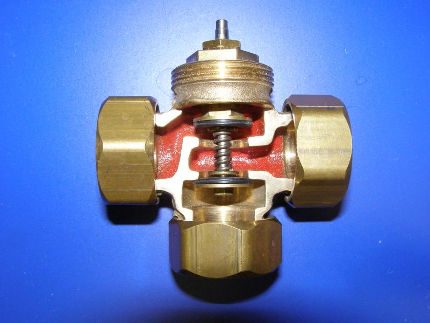
Pressure is rising due to an open top-up tap. Against the background of low dynamic pressure in the boiler and higher pressure in the water supply, “excess” water enters the heating system through the make-up valve. The pressure in the thermal circuit rises to the point requiring its discharge through the safety valve of the boiler unit.
If the pressure in the water supply drops, the coolant of the heating circuit transfers it to the boiler, then the pressure in the heating system decreases. A similar problem occurs with a faulty make-up valve. Either close the tap or replace it.
Pressure increase due to three-way valve. In the event of a malfunction of the valve installed on the double-circuit boiler, water from the "household" heating sector will flow into the heating system. The three-way valve requires cleaning or replacement.
The boiler pressure gauge does not change. If the pressure gauge shows the same pressure during changes in the operating conditions of the boiler, with an increase or decrease in temperature in the circuit, it will “freeze”. Those. through the nozzle, dirt from the heating system piled into it. Pressure gauge replacement required.
Low pressure due to expansion tank
WITH double-circuit boilers In closed heating systems, this situation often occurs: when starting in heating mode, the pressure on the boiler manometer sharply increases. If the circuit is completely filled with water, the pressure rises to 3 bar and a relief valve is activated, which dumps part of the water.
The homeowner turns off the burner and waits for the water to cool. In this case, the pressure drops to a minimum. Following the owner then tries to turn on the boiler. But the unit does not work, gives an alarm signal. Although sometimes it is possible to activate the dual-circuit boiler, if the pressure does not drop too much.
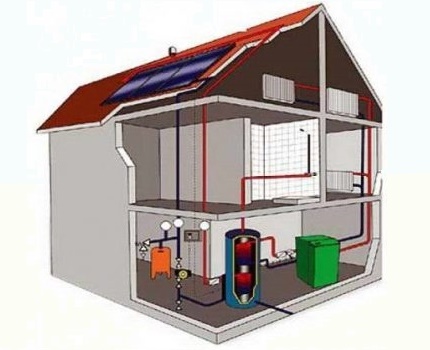
It remains only to try to increase the pressure by adding water to the system in the "cold" mode (with the burner turned off) and achieving a pressure gauge reading of 1.2-1.5 bar. But the restart of the boiler occurs with the same result: the pressure increases; the relief valve is activated; water drains; pressure at a minimum; the boiler does not want to work.
There may be several reasons for this malfunction. However, a common source of the problem is expansion tank. And it does not matter where it is located - inside the boiler or outside it.
The expansomat is divided into two parts by a flexible membrane. In one medium, in another gas (usually nitrogen) under a pressure of 1.5 bar. The water contained in the thermal circuit, which expands during heating, presses through the membrane onto the gas compartment of the membrane tank. To compensate for the increased pressure in the system, the gas in the expansion unit is compressed.
After years of using the closed heating circuit, the nipple through which gas was pumped into the expansion tank begins to flow. It happens that homeowners themselves who do not understand the purpose of the nipple discharge gas.
In any variant of events, the gas in the expansion chamber becomes smaller and smaller. Soon, the expansion tank is no longer able to compensate for the pressure of the expanding coolant in the system, its values reach a maximum.

We will figure out how to solve the problem with a lack of gas in the expansion unit. First, turn off the boiler, if it is electric - from the mains too.
If the expansion tank is built into the boiler, it is necessary to block the access of water to both of its circuits (or one). Drain the boiler completely. If the expanometer is located separately from the boiler, you need “its” fragment of the pipeline from the general network and drain the water from there.
After taking a car pump equipped with a manometer (a manometer is necessary), attach it to the nipple on the expansion cell and pump it up. From the blocked sector of the pipeline (or the boiler, if the tank is in it), water will flow - swing further.
We monitor the pressure gauge of the pump. Water stopped flowing out, and the pressure reached 1.2-1.5 bar - we stop pumping air.
It remains to open the shut-off valves, feed the circuit with water to 1.2-1.5 bar, then turn on the boiler. The heating system will work. Having discovered that the pressure problem reappeared after a while - replace the expansion valve nipple, it flows heavily.
Note that there may be another problem with the tank, the more complicated one is rupture of the membrane. Then air pumping will not help, you have to change the expansomat.
Conclusions and useful video on the topic
Clip # 1. How to balance heating radiators in a home heating system. Recall that without valves on each heating radiator, it is not possible to balance the system.
Clip # 2. Heat engineering recommendations for restoring operating pressure in closed heating circuits. The video also explains the pumping order of the expanzomat that has lost its factory gas:
A well-balanced heating system will perform its functions for several years. But once the characteristics of the coolant change or the critical elements of the thermal circuit fail. Therefore, it is necessary to constantly monitor the coolant performance by pressure gauges in order to timely respond to pressure drops.
Please write comments if you have any questions about the topic of the article. We are waiting for your stories about our own experience in normalizing the pressure in the heating circuit. We and site visitors are ready to discuss controversial issues in the block located under the text of the article.

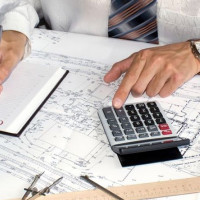 Hydraulic calculation of the heating system on a specific example
Hydraulic calculation of the heating system on a specific example 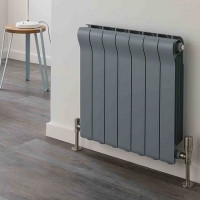 Calculation of a single-pipe heating system: what to consider when calculating + practically an example
Calculation of a single-pipe heating system: what to consider when calculating + practically an example 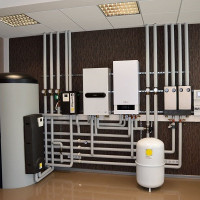 Thermal calculation of a heating system: how to correctly calculate the load on a system
Thermal calculation of a heating system: how to correctly calculate the load on a system 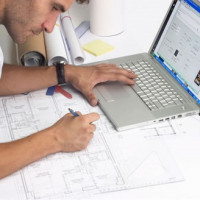 Calculation of the heating system of a private house: rules and examples of calculation
Calculation of the heating system of a private house: rules and examples of calculation 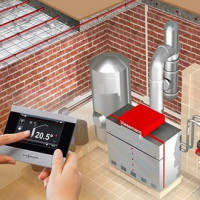 Designing heating systems for country cottages: how not to make mistakes
Designing heating systems for country cottages: how not to make mistakes  Typical schemes and rules for designing a heating system for a one-story private house
Typical schemes and rules for designing a heating system for a one-story private house  How much does it cost to connect gas to a private house: the price of organizing gas supply
How much does it cost to connect gas to a private house: the price of organizing gas supply  The best washing machines with dryer: model rating and customer tips
The best washing machines with dryer: model rating and customer tips  What is the color temperature of light and the nuances of choosing the temperature of the lamps to suit your needs
What is the color temperature of light and the nuances of choosing the temperature of the lamps to suit your needs  Replacement of a geyser in an apartment: replacement paperwork + basic norms and requirements
Replacement of a geyser in an apartment: replacement paperwork + basic norms and requirements
When building a new house, they thought for a long time about what kind of heating to install. In general, we decided to make a closed heating system, which is described a little above. It is a pity that I did not get to this information before, it would be much easier and, perhaps, even better. No matter how difficult it is to build such a system, it performs its functions with a bang!
I was faced with the problem of heating when buying a house, the old owner completely illiterate went to the heating of the premises in winter. The boiler itself was installed in the basement and pipes were used instead of radiators throughout the house. The flow of gas and water was just crazy. I replaced the boiler with the German Junkers and everywhere installed modern radiators for the second winter. The boiler efficiency has increased sharply and gas consumption has decreased significantly. No longer had to heat a huge amount of water in the pipes.And the automation installed in different angles easily copes with the control and management of space heating.
To the main question “how to increase pressure?” no answer was found. We limited ourselves to the answer: “If the pressure in the system drops, then it turns out that you need to open the feed tap or look at the expansion tank.”
The article is about nothing. And for whom is it written? An example of how to stretch to an entire article what could be written in 3 words - look at the expansion tank.
I don’t know, I found in the article at least a dozen reasons for low blood pressure:
- coolant leak;
- pump malfunction;
- malfunctions of the safety unit;
- water leakage from the heating system to the feed circuit;
- clogged cavity pipes and radiators;
- filter traps are dirty
- leaks in the joints and pipe rupture;
- use of a pump of insufficient power;
- the temperature difference between the coolant and the room (the principle of achieving the circulation pressure in the thermal circuit of the open system);
- too long looped horizontal circuit (unbalance of the dual circuit);
- And finally, the problems voiced by you with the expansion tank. A breakthrough of the expanzomat membrane and cracks in its walls.
Take this list and go ahead and check everything on points. Good luck.